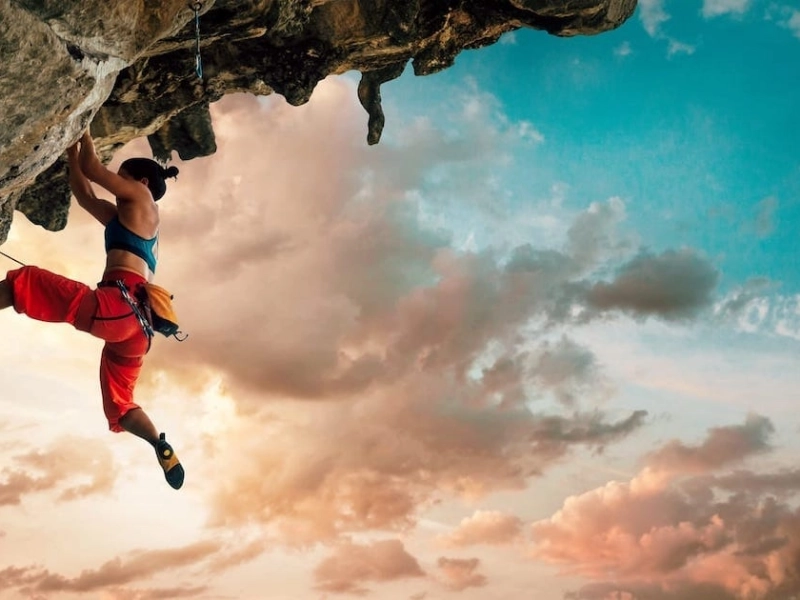The benefits and drawbacks of height vary based on the type of climb. For taller climbers, there are some routes that are more difficult, particularly those that require a sit-start where you have to work your feet up to your hands.
Additionally, being tall can be a disadvantage because, unlike strength, which increases with weight, height increases with body weight. This can be a serious issue in areas with overhangs.
Achieve

Advertisement
Having more reach is undoubtedly advantageous for beginning climbers, but as one advances with experience, the benefits of height start to diminish. One reason is that as you get taller, your body weight increases, which causes your hands and feet to be farther from your centre of gravity while you are on overhangs (this is called a moment).
Because of this, maintaining the wall will be more difficult and call for greater core strength. Taller people may find it difficult to maintain proper body alignment; in this case, you will need to practice methods like open crimps, laybacks, and slopers for the hands and flagging and smearing for the feet.
Power

Although it might seem that taller climbers are inherently more advantageous than shorter ones, this isn't always the case. Whether a path is easier or tougher for one or the other will depend on its details.
Long climbers should concentrate on developing core strength to sustain their long limbs in order to somewhat compensate for this, according to Garrett and Cornella. Exercises like planks, starfish crunches, and leg lifts can be used for this.
Taller climbers should also concentrate on developing their flexibility in order to extend their reach. This can be done by exercising with various squat variations, including goblet, pistol, and leap squats. On longer routes, improved leg range of motion will lead to more accurate footwork.
It's critical for all climbers to understand that training is more significant than height in determining one's level of skill. Both short and tall climbers can reach their potential and overcome gravity by honing their technique.
Adaptability

It's crucial to educate your hips to remain open laterally and vertically on the wall as you ascend. One excellent technique to achieve this is to perform various types of squats. Incorporate goblet and pistol squats into your training regimens. Prior to climbing, focus on stretching your lower body. You may avoid pinning your feet and reach for tiny crimps with greater ease if you have a good hip opening.
All things considered, it appears that those who are taller might have a small edge when climbing. But if you want to pursue a climbing career, building power to weight ratio, core strength, and strong technique will take precedence over height. When combined with these other elements, the finest climbers are able to surpass their height.
Harmony

Although taller climbers may reach higher altitudes, this comes with a drawback: because of their longer bodies, which store more bone, muscle, and water, they also tend to be heavier. They may become slower on routes as a result, particularly if they move between holds with might rather than finesse.
Long limbs also have the disadvantage of being more difficult to balance on overhangs because the fingers and feet are farther from the body. This may facilitate the breaking of a route's intended beta and increase the risk of falls.
We wouldn't see many tall climbers at the top of their game if being tall was genuinely an advantage in the sport. The best climbers typically have average heights or lower and possess a solid blend of finger strength, skill, and power. Additionally, shorter climbers might be more adept at building core strength, which can support them in maintaining rigidity and balance on overhanging terrain.
Advertisement














